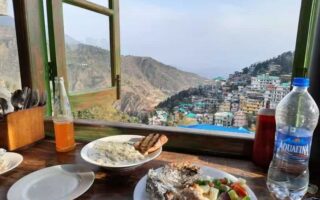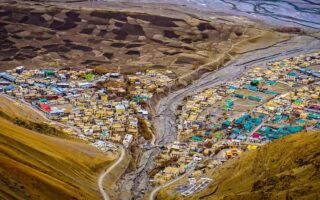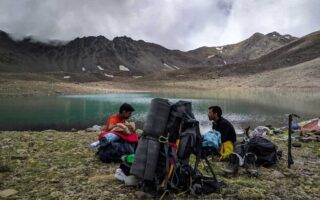You know, you could either be in love with a woman or in love with mountains or in love with mini-cooper. It totally depends on you as long as it meant something to you and to your soul. Similarly, I have a deep affection for temples and spirituality. I may sound weird to you but seriously, I live with the purpose of exploring every hub of peace and spirituality in the world.
With this affection towards spirituality, the idea of exploring Buddhism in India has always been a fulfilling experience for me. Whether it is the Stupas of Sanchi or the high ended monasteries of Himachal Pradesh and Sikkim, I felt luxuriate in exploring them.
Buddhism is One of the Most Ancient Methodologies in the World…
It is not only a religion but a philosophy that empowers humanity, just like Hinduism does. Basically, both the religion shares much similar knowledge and human interest. For example, the main ideology of “Karma, Dharma and Buddha” are found in their manuscripts – “The Vedas” of Hinduism and “The Digha Nikaya” of Buddhism. Similarly, mantra, meditation and yoga are common practices among both the religions. Furthermore, I found that the Lord – Shiva and the Guru Padmasambhava are same.
Therefore, being a Hindu, the knowledge about these common splendours has always attracted me towards Buddhism. And therefore, I made a note to visit and explore the prominent Buddhist monasteries of Himachal Pradesh.
There is a Rich Connection between Himachal and Buddhism:
Like there are important Hindu temples and Shakti Peeths in Himachal Pradesh, the presence of Buddhist monasteries in the state have built a deeper root for the devotees of Buddhism. Some of oldest monasteries are present from ancient time while some are a few centuries ago. Today, all these monasteries are taken care by the government of India. What makes this connection between Himachal and Buddhism richer is the presence of great his holiness Dalai Lama in Himachal Pradesh. The great his holiness Dalai Lama lives in Dharamshala due to which the state has become a hub for the Tibetan. They have settled down in the state.
There are many prominent monasteries in Himachal Pradesh which one must include in his/her itinerary. Exploring these monasteries have helped me in getting insights of the rich history of Buddhism. With these monasteries, I was able to understand the core form of Buddhism.
List of Prominent Monasteries in Himachal Pradesh:
1- Namgyal Monastery, Dharamshala
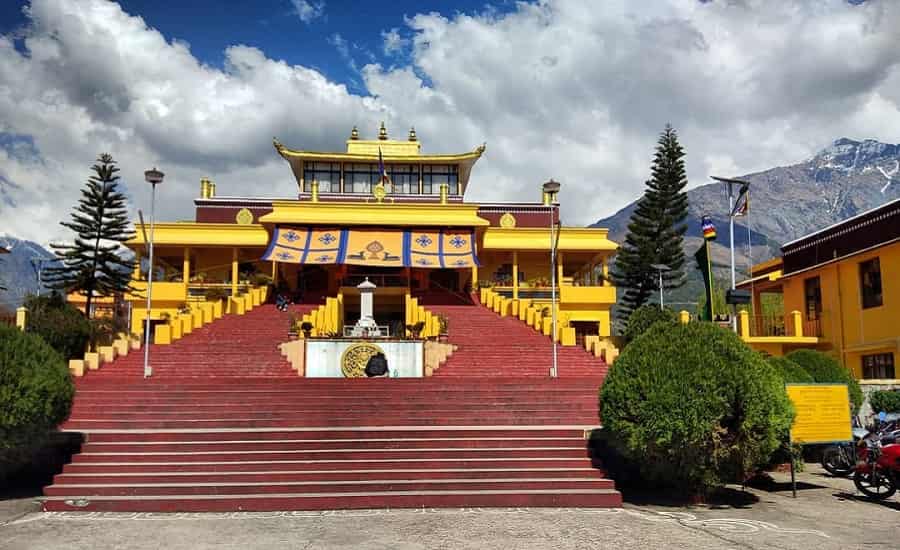
Namgyal Monastery is the most admired monastery in Dharamshala (McLeodganj). In fact, its popularity can be felt throughout the Himachal Pradesh. The reason is that the monastery is the home of great his holiness Dalai Lama. The monastery is present in McLeodganj (few km from Dharamshala). Namgyal monastery was basically built to assist people who have spiritual issues. Namgyal monastery has a large area for tourists and the local to sit, relax and chant their prayers. You can pray to Lord Buddha either by sitting on the floor or by spinning the praying wheel.
History of Namgyal monastery: In 1575, The Namgyal monastery was established by 3rd Dalai Lama in Tibet. But in 1959, China invaded Tibet, after which the 14th great his holiness Dalai Lama along with 1000s of Tibetan migrated to countries like India, Nepal and Bhutan. Thereafter they re-established the Namgyal Monastery in Dharamshala, Himachal Pradesh of India.
There is a central cathedral where the old books and teachings of the Buddhist and Tibetan cultures are kept. It is like a library of thoughts and prayers. I feel like, the temple establishes a peaceful ambient between the Indians and the Tibetans. This was the main reason for keeping this monastery in my itinerary.
2- Rewalsar Lake and Its Monasteries
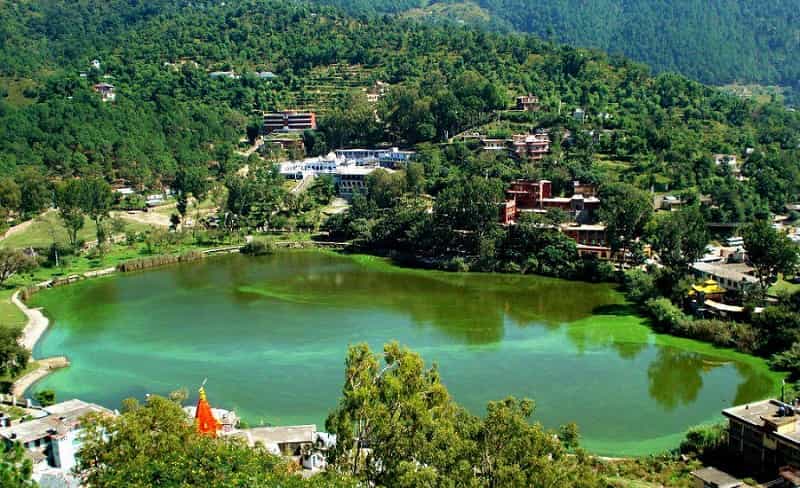
Rewalsar Lake is present in Rewalsar village, 20 km from Mandi. The lake is highly significant among Buddhist devotees because it is believed that the lake was created by Guru Shree Padmasambhava in the 8th century. Moreover, in the order to preserve the traditional beliefs, 4 monasteries were built here: Nyingma Gompa, Drikung Kagyü Gompa, Zangdok Palri Palace and Zigar Gompa. These monasteries surround the Rewalsar lake. The lake also houses a huge statue of Guru Padmasambhava.
Lastly, the holy water of the lake is so pure and crystal clear that we can easily see the reflection of the surrounding and say “AHA HOW MAGICAL!!!”
3- Tsuglagkhang Monastery, McLeodganj
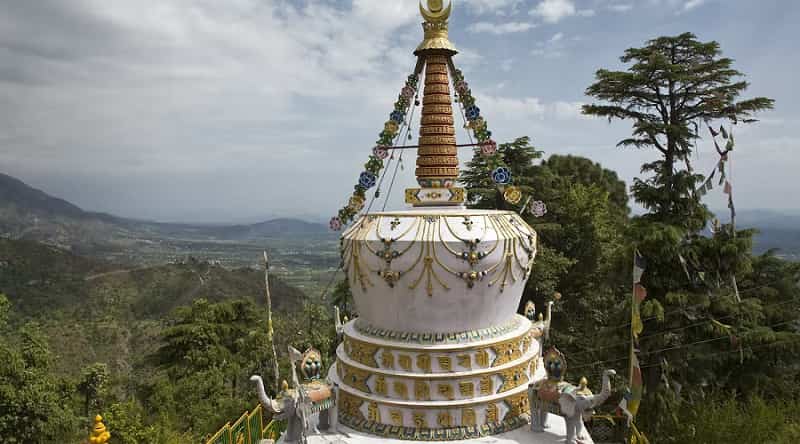
Tsuglagkhang monastery is considered as the private monastery of the great his holiness Dalai Lama. But it is open for all the devotees who are in search of spirituality. The monastery is present just behind the Namgyal monastery. The monastery houses different statues and posters of Guru Padmasambhava, Avalokitesvara and the Shakyamuni. The only thing which one must follow here is – to maintain silence inside the premises and enjoy the aroma in the atmosphere. Also, you are not allowed to click photographs here. Therefore, to enjoy the aroma of Tsuglagkhang monastery I listed it in my itinerary.
4- Gyuto Monastery
The Gyuto Monastery is one of the oldest monasteries in the world. The monastery was built in 1959 in Dharamshala but has the connection with an old Tibetan-Gyuto monastery built in 1474. However, there is a significant difference between Gyuto monastery and other monasteries, that is its rituals. The monastery is famous for its Tantric rituals, meditation and the Buddhist philosophies. These rituals have made the monastery unusual.
5- Dhakpo Shedrupling Monastery, Kullu
Dhakpo Shedrupling Monastery is located in Kais village of Kullu, at a distance of 10 km from the main bus stand. Basically, the Monastery is located on the banks of river Beas, providing some of the picturesque views of valleys and the river. visiting. Also, this Tibetan monastery was inaugurated by the Great His Holiness Dalai Lama in 2005. So, if you are planning to spend some time in Kullu, then this monastery is worth visiting.
6- The Tibetan Monasteries of Manali
Basically, there are two famous monasteries in Manali that capture the heart of tourists. These monasteries are Himalayan Nyingamapa Gompa and Gadhan Thekchoking Gompa. These monasteries are perfectly nestled between the snow-clad mountains of Manali. The unique thing about these monasteries is that these monasteries run their own artistic schools, especially for handicrafts and carpets. And hence, they are able to preserve the culture and traditions of Buddhism in Manali region.
7- Dhankar Monastery
- Location: 25 kms away from Kaza in Spiti valley.
- Found Here: Buddhist scriptures in Bhoti language and 100 Lamas
- Houses: Lha khang and Lha Opa Gompa.
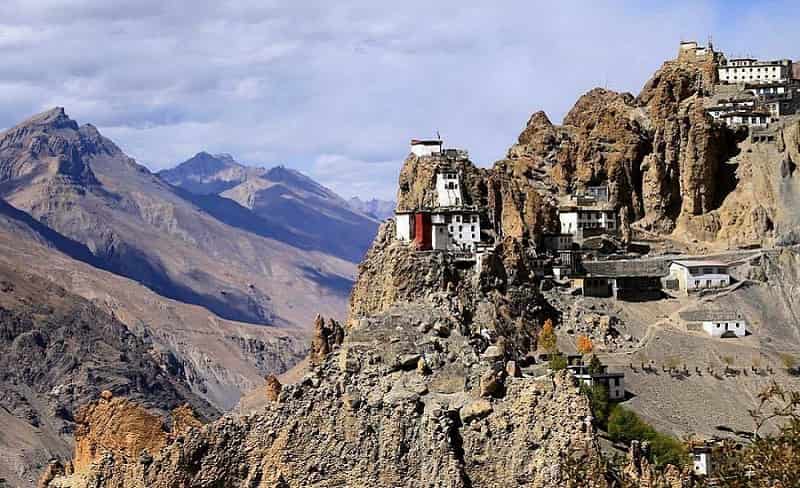
Dhankar Monastery is situated in Kaza which is 25 kms away and is in Spiti Valley. Dhankar is a village which is big and was the erstwhile capital of King Spiti. The meaning of Dhankar is ‘a place where strangers are not reachable’. Dhankar Gompa is named after a person. The tourists who visit here say that they are not able to forget this temple.
A fort is situated on top of the hill which was used as a prison in earlier times. There are about 100 Lamas and has scriptures of Buddhist in Bhoti language. It has 4 figures from which the main statue is of Dhayan Buddha or ‘Vairochana’ that consist of 4 figures one behind the other.
The most interesting part is on the uppermost peak where there is a small chapel of the ‘Lha Opa Gompa’ which has amazing murals showcasing the life of Buddha. It is located just behind the Dhankar village. The bright red pigment which is dominant there is said to be printed in the 17th century which has been in good condition till now.
8- Nechung Monastery
- Location: Dharamsala
- No of Monks Residing Here: 115 Monks
Nechung Monastery is situated in Dharamsala which has 115 monks residing there. Gangchen Kyishong is just below the Tibetan library which is the new Nechung monastery, the seat of Nechung. The people worship it as it is the protector deity and state oracle of Tibet. Dorje Drakden is the main protector of the Dalai Lama and the Government of Tibetan. Nechung Oracle has been consulted by the state before taking any major decisions of the state.
In Tibet Drepung Monastery is just above the Nechung monastery and is the capital of the country and from west of Lhasa it is just four miles away. The Indian Sage Dharmapala is a descendant from where the original Nechung came to Tibet. In the 8th century AD, during the time of King Tri-Song Deu-Tsan, the Indian tantric and saint ‘Padmasambhava’ appointed him as a protector of Samye monastery.
Samye was known as Nechen that means the larger site and Nechung means smaller site. Nechen was the first monastic institute of Tibet at the period of Samye.
The admission of 14 additional monks was done by Thupten Gyatso at the time of the Thirteenth Dalai Lama. The addition of these monks made the total no of monks from 101 to 115. This has been the standard strength of monks from that time.
9- Tabo Monastery
- Location: 46 kms away from Kaza, Spiti valley
- Founded In: 996 A.D
- House Of: Deva Gyatsho
- Also Called As: Tabo Chos Khor
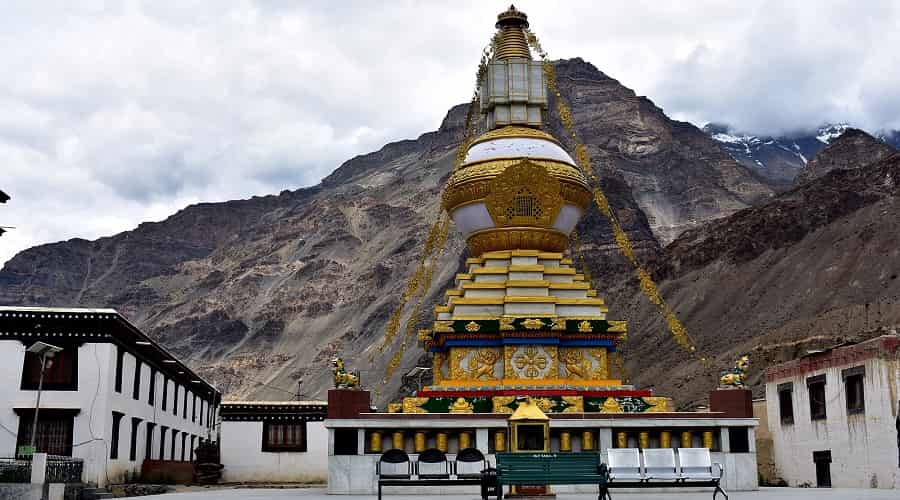
The Temples Which Were Built in Earlier Times
Tabo Monastery is located just 46 kms away from the east of Kaza in Spiti valley. It is also known as Tabo-Chos-Khor which was founded around 996 A.D. Tabo-Chos-Khor means ‘doctrinal circle’ is a building which possesses a monk’s chamber, nine temples, 23 chortens and also the chamber for the nuns.
There are number of caves built in order and is on top of the enclave. The cave has an assembly hall and was also used as a place to live. In Spiti, Tabo is the biggest monastic complex. This was the original idea of Rinchensang Po who was a teacher and a great translator.
Temples in the Tabo Complex
Gtsug Lag Khang
It is the Temple of Enlightened Gods which is also known as the Assembly Hall (Du-Khang) which is the center of the complex. The complex has a vestibule, a sanctum and an assembly hall.
Adibuddha had five sons who were spiritual and one of them is Vairocana. He was the first self creative Buddha at that time and his image is portrayed on the walls “turning the wheel of the law”.
- gSer Khang: It is also known as the Golden temple and it is said by the local people that it is gold layered. In the 16th century, the person who ruled Ladakh was Senge Namgyal, by whom this shrine was renovated. The ceiling and walls have murals on them.
- dKyil-hKhor-Khang: It is also known as the Initiation temple or the Mystic mandala temple. The huge painting of Vairocana is printed on the wall which is facing the door. The Vairocana in the painting has eight Bodhisattvas surrounded by him. The other areas are covered by Mystic mandalas.
- Byams-Pa Chen-po Lha-Khang: It is also called as Bodhisattva Maitreya temple which has more than six meter high image of Bodhisattva Maitreya. There is a hall, sanctum and vestibule.
- Brom-Ston Lha-Khang: It is also called as the temple of Dromton and is believed to have been founded by Dromton. It is located in the complex on the northern edge. The carving on the door is done beautifully with the walls inside are full of murals.
The Shrines Which Were Built Later Are:
- Z’al-ma (The Chamber of Picture Treasures)
- Brom-Ston Lha-Khang (The Temple of Dromton)
- Gon-Khang (The Mahakala Vajra-bhairava Temple)
- dKAR-abyum Lhakhang (The White Temple)
10- Shashur Monastery
- Location: 1.5 kms away from Keylong
- Founded By: Lama Deva Tyatsho of Zanskar
- Founded In: 17 A.D
- Renovated By: Deva Gyatsho
- No of Monks Residing Here: 115 Monks
Shashur Monastery is located just 1.5 kms away from Keylong. ‘In the blue pines’ is the meaning of Shashur. It is founded by Lama Deva Tyatsho of Zanskar, who was the missionary of the King of Bhutan in 17 A.D. The renovation of the monastery is done by Deva Gyatsho, where he lived till his death.
It is said that at that when Deva Gyatso was cremated, the heart was inside the black image of Gyatso as the heart did not burn. In Gompa there is also a statue of Namgyal.
Tibetan Buddhist have Red sect which the Gompa belongs to and are also locally known as ‘Gelug-pa’. In Bhutan there is a Lion cave Temple which is connected with them by having spiritual links with them. There are beautiful wall paintings in the Gompa which showcases the Siddhas and it also has ‘Tanaka’ that is of 15 ft. These both things are beautiful and invaluable.
Ritual plays of this monastery are famous among the people which have laws that are brought into by the Lamas. The architecture of the three storyed building is a significant. The complex is planned vertically because of the site was narrow. Inn the monastery, celebrations of Chham is there in the month of June or July.
11- Tayul Gompa Monastery
- Location: 6 kms away from Keylong, Bhaga valley
- Founded In: 17 A.D
- Founded By: Dugpa Lama, Serzang Richen of Kham Region of Tibet,
- Things Found Inside: Mani wheels, Statue of Padmasambhava and a Library
Tayul Gompa Monastery is just 6 kms away from Keylong in Bhaga Valley. It has a great collection of books in the library and also has Mani wheels and a statue of great Padmasambhava. It was founded by Serzang Richen of Kham Region of Tibet and Dugpa Lamba. It is believed to be built in 17th A.D
It is located above Satingri village and has a statue of Great Padmasambhava which is of 12 ft in height. The ‘Vajravarahi’ and ‘Simhamukha’ are his two manifestations. The ‘Kangyur’ and Thankas’ in the library showcase the Life of Lord Buddha.
Tayul Gompa Monastery is written as Ta – Yul in Tibetan. The meaning for this is the “chosen place”. In the start of 17th century A.D, the monastery was founded by Dugpa Lamba, Serzang Richen of Kham Region of Tibet.
There are around hundred million Mani Wheels in this monastery. It is to be said and believed by the People that Mani Wheel is ‘Self turning’ and in 1886 it was turned by it own.
12- Key Monastery
- Location: Kinnaur
Kye (Ki) Monastery is located just 14 kms away in Kaza in Spiti valley. The monastery is well known for the training center of lamas. This is the most important feature of the valley. The lamas can be seen dancing, playing and singing on their horns and pipes. You can also find the mural, scriptures, books and paintings of other goddess as well as Buddha. The western part of Spiti River is served by the Kye (Ki) monastery which is one of the most important features of the valley.
The Architecture found in the monastery is an excellent example of the monastic architecture. This was developed under the Chinese influence during the 14th century. In the middle of the 17th century the monastery was plundered by the Mongols and again it had three attacks in the 19th century.
The destruction happened and the patch jobs were done which made the box like structure that looks like a fort made for defense.
Lhalung – Lhalung is one of the ancient temples in the Spiti valley and the other temple complex of Dhankar; both are the important monasteries in Spiti.
Guru Ghantal Monastery
- Location: Close to Gondla, Pin valley
- Famous As: Triloknath
- Found In: 800 years ago.
- Found Here Is: The image of Boddhisatva Avalokiteshvara
Guru Ghantal Monastery close to Gondla in Pin valley. It is popularly known among the local people as Triloknath. It was found around 800 years ago but just renovated around 30 years ago. The monastery is also one of the centers of Buddhist which is the oldest.
Guru Ghantal is known for its idols of Padmasambhava and the carvings that are made from wood. This shrine is known as Triloknath which has an image of ‘Bodhisattva Avalokiteshvara’. The evidence found by the archaeological department say that it had been a important pilgrimage for the Hindus as well as Buddhist in the earlier time. This shrine is one of the ancient shrines of Buddhist.
‘Marichi Vajravarahi’ is an ancient temple which is situated at the confluence of Miyar stream and Chandrabhaga River in Udaipur. This temple is one of the relics of Indian Buddhism survived from that time. The Buddhist people there still worship this site and respect the site as the temple of ‘Marichi Vajravarahi’.
These are the top monasteries (irrespective of any ranking) of Himachal Pradesh which I put in my itinerary. Other than these monasteries, the monasteries of Lahaul-Spiti are very well known to the travellers. The monasteries are Tabo monastery, Kye monastery, Kardang monastery, Gandhola monastery, Kungri monastery, Kibber monastery and Shashur monastery. These are known as the spiritual admiration of Lahaul-Spiti. I hope I will cover these monasteries as well on my next trip.
